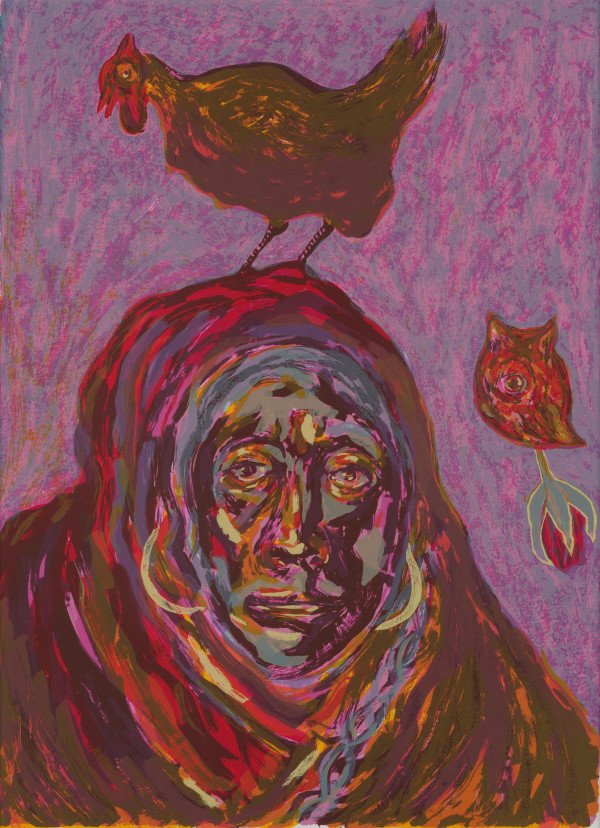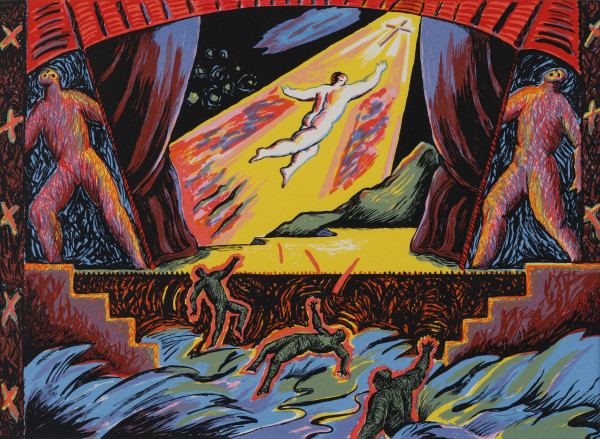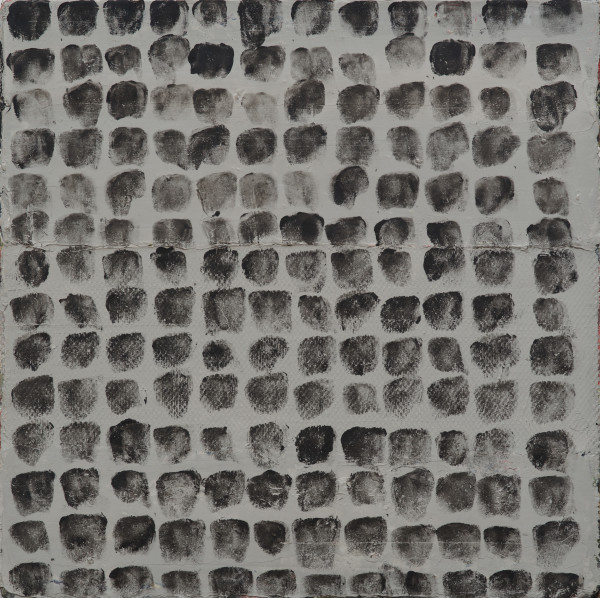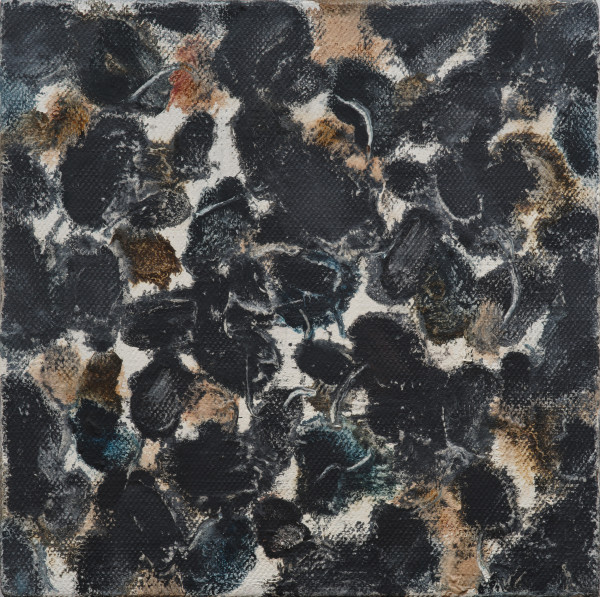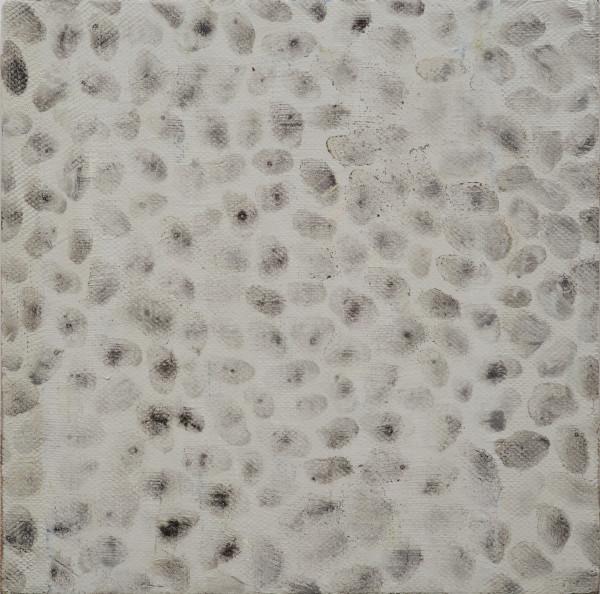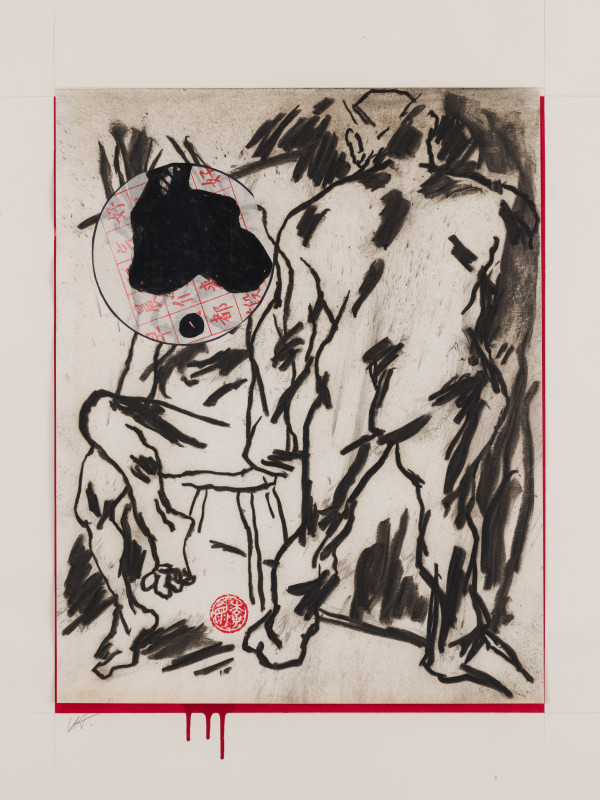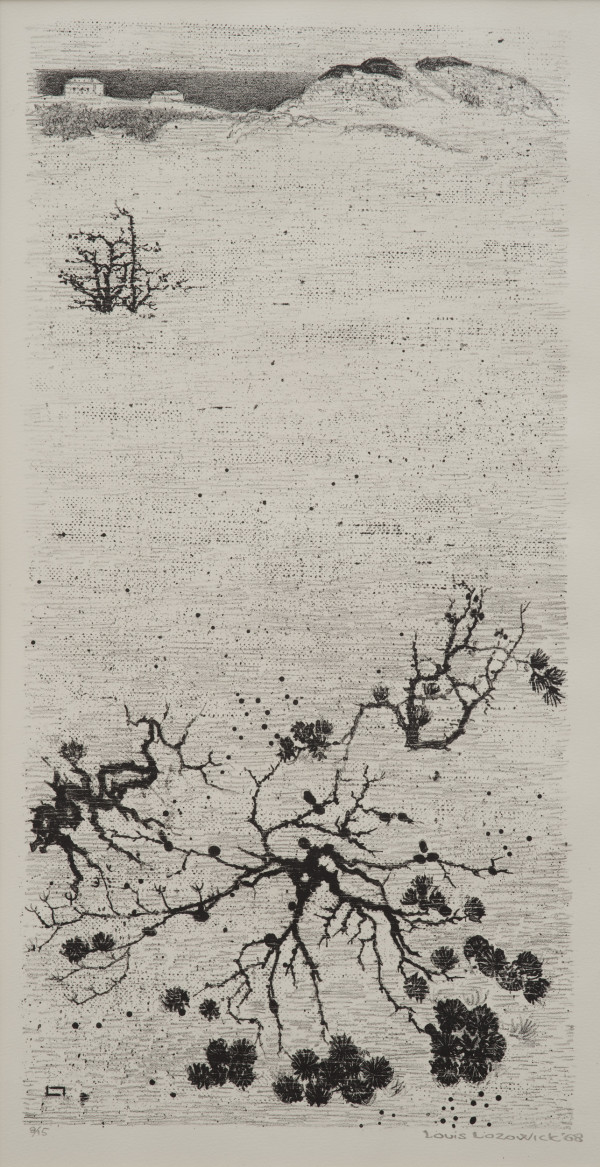
"This house, like the other "small houses" along this street, is dominated by a mother figure. It is a place of refuge, where one can be nurtured and protected. It has long been "women's place." A grown daughter, her own young child straddling her hip, has returned home to visit with her mother. There is a sense of calm between the two, of quiet acquiescence. However, the psychological distance between them is obvious.
The daughter's child acts as the point of upset, expressive of their turmoil within their relationship. Toddlers, in their characteristic agitation, are used to represent a sort of questioning of all that has gone before. They don't accept the order imposed on them. They cannot be reasoned with. This child struggles to be free of the hold on him. His young mother appears totally oblivious to the struggle of her child; likewise, she seems not to recognize the limitations of the "house"."
- Claire Klarewicz-Okser
- Claire Klarewicz-Okser
- Small Houses, 1990
- Gouache on paper
- 23.25 x 16.125 in (59.06 x 40.96 cm)
- Framed: 31 x 25.25 in (78.74 x 64.14 cm)
- Collections: Permanent Collection




